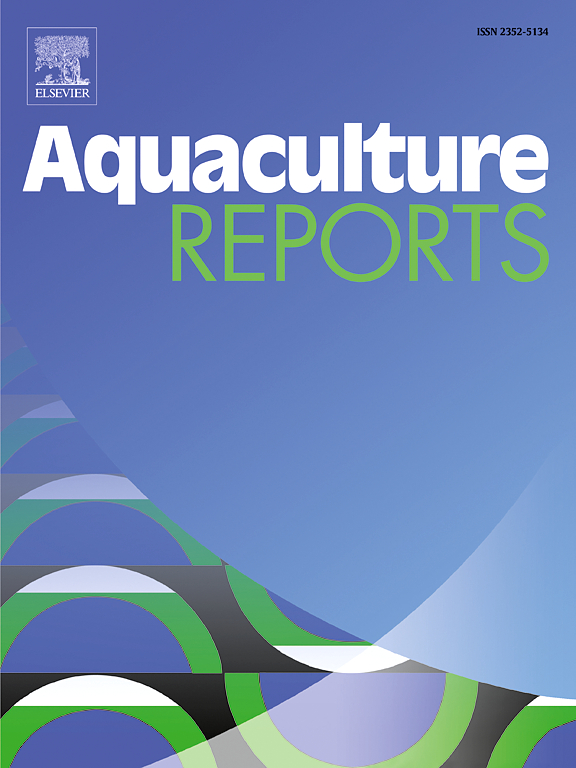Salinity affects the lipid metabolism and intestinal microbial composition of swimming crab Portunus trituberculatus
IF 3.2
2区 农林科学
Q1 FISHERIES
引用次数: 0
Abstract
The swimming crab (Portunus trituberculatus) is an aquaculture species with high commercial value. However, there is limited information available on the effects of salinity on the lipid metabolism and gut microbiota of P. trituberculatus. This study investigated the hepatopancreatic index, hepatopancreatic lipid metabolism, physiological and biochemical indicators and gut microbiota of P. trituberculatus cultured at salinity 28 ‰, 25 ‰, 22 ‰ and 19 ‰ for 8 weeks. The results showed that the highest expression level of SREBP1, FAS, LPR1, ACOX and FABP was found in 19 ‰ group compared to the 28 ‰ group, along with the enzyme activities of CPT1 and FAS. On the contrary, the expression level of DGAT1 and LPR2 in the 28 ‰ group was significantly higher than that of 19 ‰ group, along with the enzyme activities of LPS. The results of fatty acid content showed that only polyunsaturated fatty acids showed significant changes in response to salinity, such as C18:2n6, C20:2n6 and C20:3n3. Moreover, the intestine microbial α-diversity index of crab in the 28 ‰ treatment was higher than that of other groups. The dominant phylum in gut samples was Proteobacteria, followed by Firmicutes and Bacteroidota. Moreover, Mycoplasma, Candidatus Endoecteinascidia and Shewanella showed a significant decline in the 28 ‰ group compared to the 19 ‰ group. Bacterial functional pathway prediction has also shown that the KEGG pathways involved in ovarian steroidogenesis, NF-kappa B signaling pathway and regulation of lipolysis in adipocytes increased in 28 ‰ group compared with 19 ‰ group. In conclusion, hepatopancreatic fatty acid metabolism was more active in the 19 ‰ group, whereas the 28 ‰ group not only promoted triglyceride synthesis in the hepatopancreas, but also facilitated ovarian development of P. trituberculatus by influencing the gut microbial composition.
求助全文
约1分钟内获得全文
求助全文
来源期刊

Aquaculture Reports
Agricultural and Biological Sciences-Animal Science and Zoology
CiteScore
5.90
自引率
8.10%
发文量
469
审稿时长
77 days
期刊介绍:
Aquaculture Reports will publish original research papers and reviews documenting outstanding science with a regional context and focus, answering the need for high quality information on novel species, systems and regions in emerging areas of aquaculture research and development, such as integrated multi-trophic aquaculture, urban aquaculture, ornamental, unfed aquaculture, offshore aquaculture and others. Papers having industry research as priority and encompassing product development research or current industry practice are encouraged.
 求助内容:
求助内容: 应助结果提醒方式:
应助结果提醒方式:


